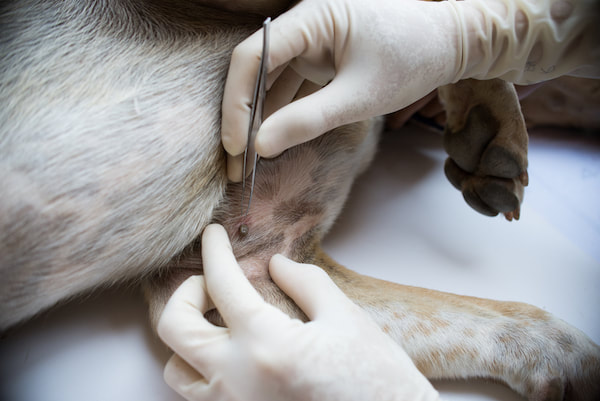|
Removing Ticks From Your Best Friend By Pierre Mouchette | Bits-n-Pieces Ticks are pesky little blood suckers that transmit infectious diseases like Rocky Mountain spotted fever and Lyme disease. They infect both humans and our furry friends. There is a proper way to remove a tick from your dog to lower its chances of infection. This article will provide information on how to remove a tick when to see a vet about a tick bite, and how to protect your pet year-round.
What Is The Best Way To Remove A Tick From Your Dog? You will need several tools to remove a tick properly. Gather the following:
Can A Tick Be Removed Instantly? Proper tick removal only takes a few minutes once you have gathered your tools. You may be tempted to use your fingers and get rid of it quicker, but that is not a good idea. You can spread the infection to your fingers and may not remove the tick entirely. Taking the time to do it right will be best for you and your pet. What Are The Dangers Of Incorrectly Removing Ticks? When you remove the tick, the goal is to get the whole tick, including the head. If the head is left behind, it can be a source of infection. Squeezing The Tick So It Bursts Can Spread Infectious Fluids. Do not use petroleum jelly (Vaseline), nail polish remover, or heat to draw out the tick. You might have heard that these methods work. But they will not remove the tick properly and may prolong its life on your pet. The longer the tick is attached to your pet, the more time it has to infect it. The actual danger of a tick bite is a tick-borne disease. It can be debilitating and cause life-threatening illnesses. Most of these diseases require the tick to be attached for more than 24 hours. So removing ticks when you find them and keeping your dog on tick prevention can keep them from getting sick. When Should You See A Vet About Ticks On Your Dog? Your dog may not show signs of sickness for 7 to 21 days after a tick bite. If the bite site looks irritated or infected, or if you notice any of the following symptoms, take them to the vet:
How To Check For Ticks On Dogs Ticks live in the woods, forests, and backyards all across the country. That is why it is essential to check your dog for ticks whenever they spend time outdoors. Otherwise, you probably will not know that your dog has a tick. Most dogs will not have any symptoms from a tick bite, and they will not scratch or chew in the area. To look for ticks on your furry friend:
When And Where Are Dogs Most Likely To Get Ticks? Ticks can be present all year long but are most active from March to November. They live in wooded areas, tall grass, and piles of leaves. They may also live in the shrubs around your house or garden. It is a common misconception that ticks jump or drop from trees, but that is not the case. Ticks can only crawl. They grasp onto an animal as it walks past a blade of grass or leaf debris, then it moves around on the animal's body in search of an excellent place to feed. What Are The Best Ways To Prevent Ticks From Biting Your Dog? There are many tick-prevention medications available for dogs. Most are topical liquids combined with flea prevention and applied to the skin. Others are medicated collars. If your dog’s skin irritates easily, your vet may recommend a chewable tablet. The best tick prevention for your pet will depend on several factors, including:
0 Comments
Your comment will be posted after it is approved.
Leave a Reply. |
Archives
May 2024
|
